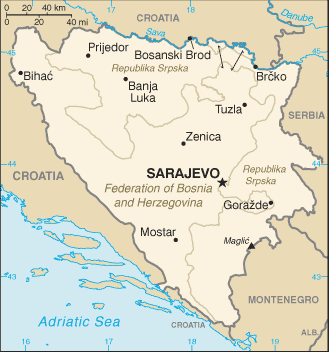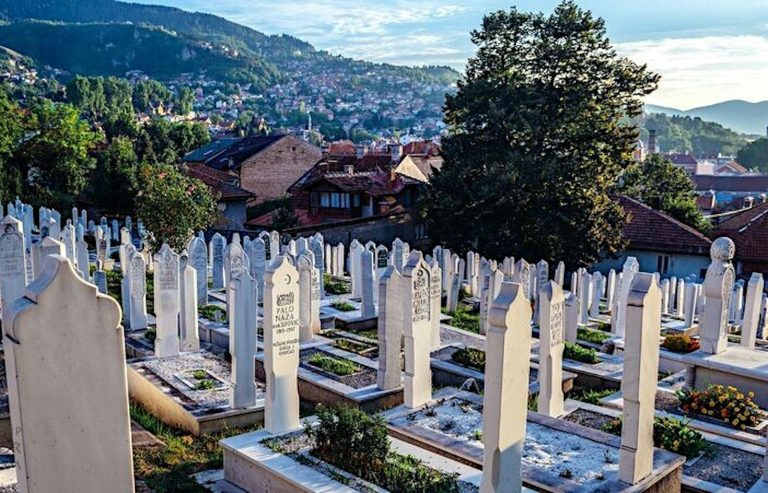Your cart is currently empty!
Denial Kills Again, 30 Years After the Srebrenica Genocide

On July 11, 1995, the Srebrenica massacre began in Bosnia and Herzegovina. The entire Bosnian genocide took place between 1992 and 1995, but the massacre at Srebrenica was declared a genocide by the International Court of Justice during the war crimes tribunals. They were killed because they were primarily Bosniaks (Muslim Bosnians), and because they were male; the Serbs committed androcide to prevent them from fighting back.
Over 8,000 men and boys were killed in and around Srebrenica between July 11 and 16 and buried in mass graves. Their remains showed signs of mutilation and some were bound by their hands or feet before being killed and buried.
As of 2012, 6,838 people’s remains had been identified through DNA analysis, and at least 8,372 men and boys had been marked as missing or killed, but the International Commission on Missing Persons estimates that about 1,000 more individuals were still missing—putting the potential total at around 9,372 killed or missing.
Srebrenica was declared a “safe zone” by the United Nations, and Dutch Battalion peacekeepers were stationed there to protect civilians from the advancing Bosnian Serb Army and maintain the ceasefire. The Dutch troops were friendly with the Serbs, and they failed to protect civilian lives as the Serb military committed war crimes. Serbs took men and boys to the forest to kill them, sexually and physically assaulted people, and forcibly relocated over 30,000 Bosnian women and children in an ethnic cleansing event.

A map of Bosnia and Herzegovina, showing the Republika Srpska state within.
Srebrenica is located to the northeast of the capital Sarajevo, near the border to Serbia.
On July 6, the Bosnian Serb forces began Operation Krivaja 95 which specifically targeted civilian areas. The United Nations posts fell to the Serbs as they shelled the surrounding villages of Srebrenica, forcing civilians towards the center.
By July 12, about 30,000 people were seeking refuge in a UN compound which was that was previously a factory. The conditions were dire, there was not enough food, water, space, or toilets.
And on July 13, between 10,000 and 15,000 men and boys attempted to escape through the forest, knowing they would be killed if they stayed. They were dehydrated, hungry, and sleep deprived. The Serbs caught them and opened fire on thousands of men. Survivors testified that they were attacked with chemical agents that disoriented them and that the Serbs had infiltrated their group dressed in civilian clothes to attack them. Only one third of those who tried to escape survived by fleeing in different directions.
For several days, the Serbs hunted those who survived the initial shooting operation in order to kill them, and they buried the bodies in many mass graves—sometimes transporting them to other locations. Thousands of gravesites have been identified throughout Bosnia, Serbia, and Croatia, where the genocide took place, and nearly 100 gravesites have been excavated in and around Srebrenica.
Each year on July 11 there is a memorial event at the Srebrenica Memorial Center. While people mourn the loss and fight for justice they are also fighting against genocidal denial.

A memorial gravesite in Srebrenica.
The denial of the Srebrenica genocide, and Bosnian genocide as a whole, is essentially a state policy of the Republika Srpska and of Serbia. Tactics include governmental revisionism, denial in the media, celebrating genocide leaders, and political gridlocks to block legislation that criminalized genocide denial.
Not only that, but denial of the World War II-era genocide in the Former Yugoslavia is still rife. Between 300,000 and 500,000 people were killed by the Croatian fascist Ustaše regime and at least 50,000 by the Chetnik forces—a Serb nationalist movement.
To deny genocide is to kill twice: first, the people, then the truth. Thirty years later many of the survivors are still alive, but Serbians still deny the genocide. This robs the victims and survivors of dignity, obstructs justice, perpetuates Islamophobia and racism, and emboldens the perpetrators. As a community, as the human race, people must address genocide and learn from the horrors to honor the lives lost. By remembering a genocide we solidify our commitment to seek truth, justice, and honor the sanctity of human life.
Share Your Perspective
Subscribe to Truthlytics today to stay informed and dive deeper into the issues that matter.
Already subscribed? Log in to join the conversation and share your thoughts in the comments below!




